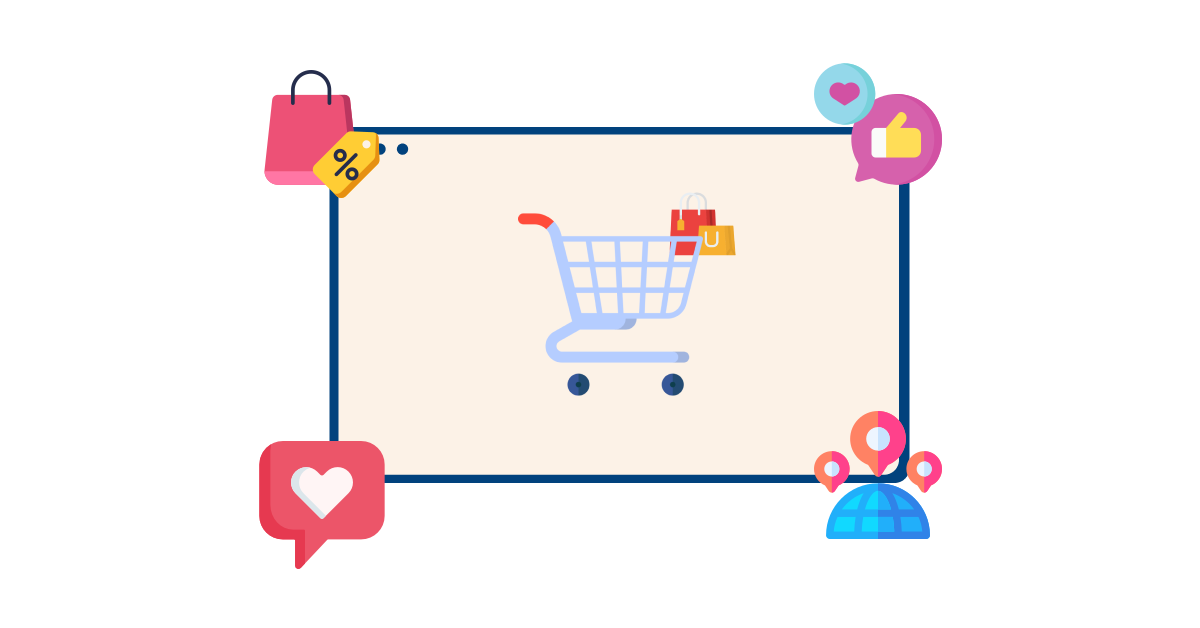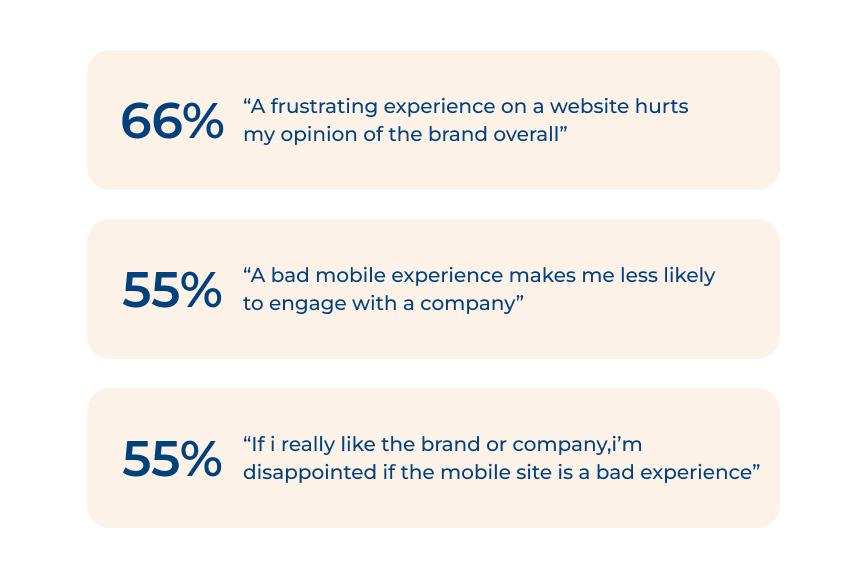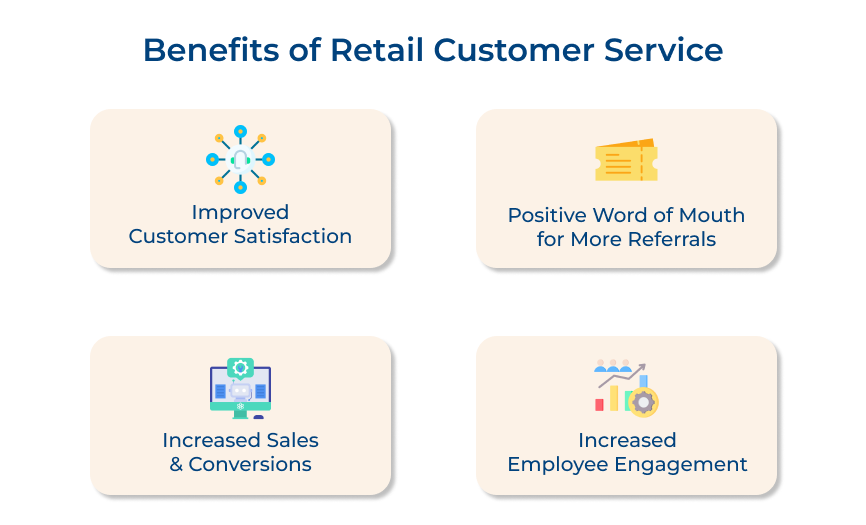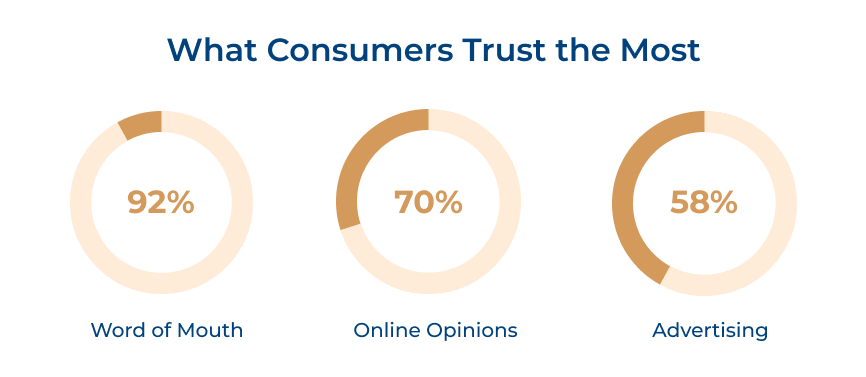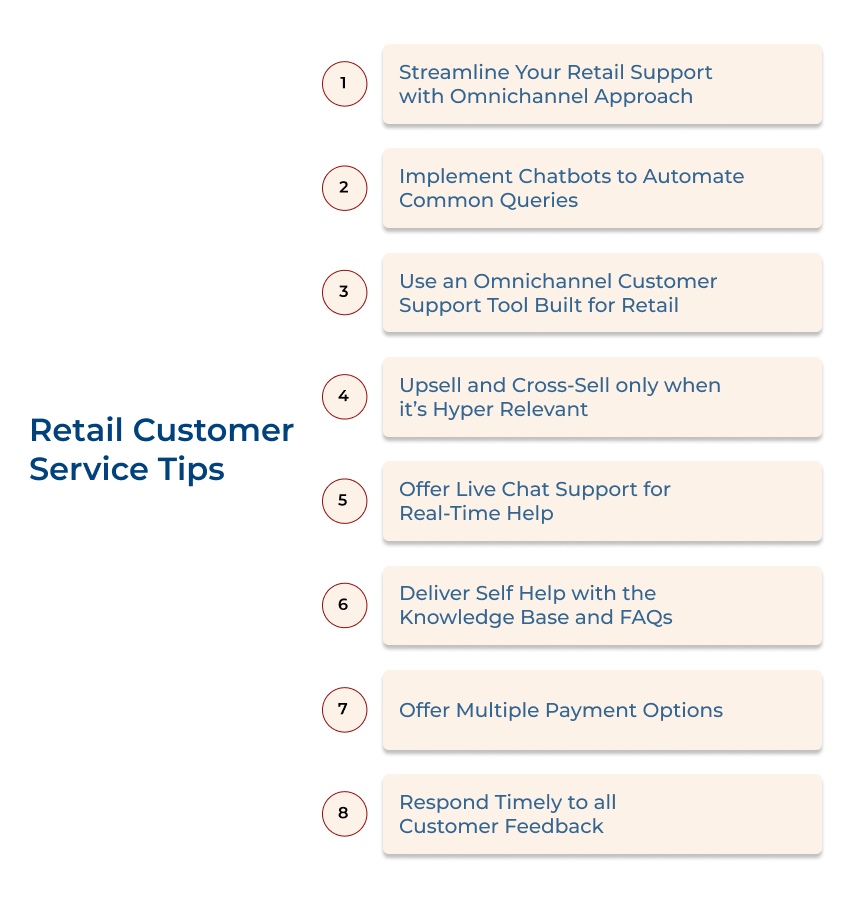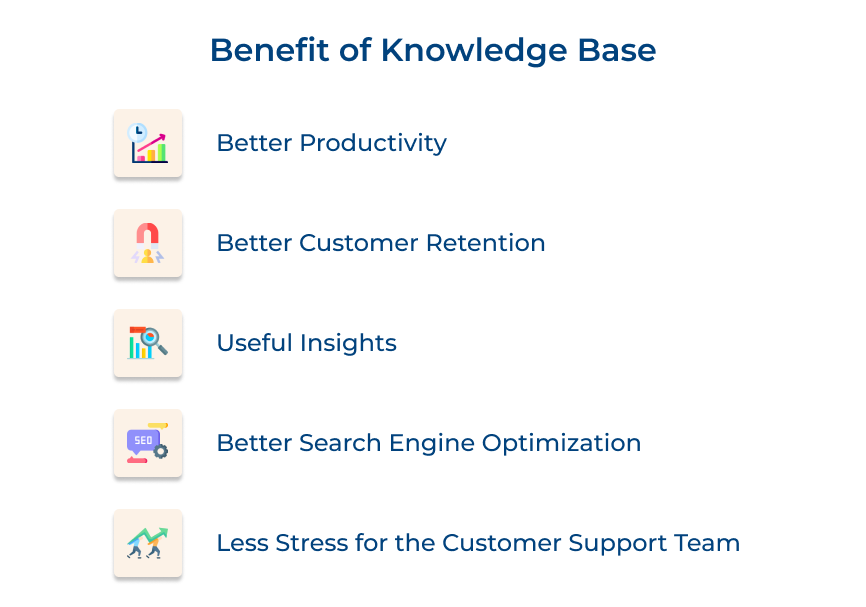1. Streamline Retail Support with Omnichannel Approach
An omnichannel approach to customer service is the way forward. An omnichannel strategy is a seamless and integrated approach to retail customer experience. It combines multiple channels such as social media, email, phone, and chat to provide a consistently positive customer experience. Omnichannel initiatives can generate an additional 80% of store visits.
Companies can easily streamline retail support with an omnichannel approach. Integrating AI customer service software will help businesses better understand customers’ preferred communication channels and offer proactive, data-driven support.
Best Practices:
- Utilize a single platform for all customer interactions, including in-store, online, and mobile channels, to provide a seamless experience.
- Offer personalized recommendations and solutions based on each customer’s purchase history to increase satisfaction.
- Implement real-time inventory management and order fulfillment systems to ensure consistency across all channels.
2. Implement Chatbots to Automate Common Queries
Chatbots have become one of the most preferred ways of communication for customers. 74% of customers prefer chatbots over a human corporate agent to solve their queries. Implementing chatbots in your retail customer service management operations can help automate common queries, freeing up time for customer service representatives to handle more complex issues.
Chatbots can personalize responses based on customer data, which helps build stronger customer relationships. The implementation of chatbots will reduce customer wait times, increase customer satisfaction, and reduce customer service costs.
Best practices:
- Ensure the chatbot is trained with a variety of responses that mimic human interaction to avoid sounding robotic and impersonal.
- Monitor chatbot interactions regularly to identify areas for improvement and update the chatbot’s responses accordingly.
- Provide customers with an option to connect with a live agent for more complex queries or issues that require human intervention.
3. Use an Omnichannel Customer Support Tool Built for Retail
An omnichannel customer support tool can help retailers prioritize and manage customer inquiries across multiple channels. Providing a seamless customer experience regardless of the channel will make the customers feel they are speaking to one brand instead of multiple disconnected departments.
A good omnichannel tool should also provide support agents with the complete customer history, enabling them to offer faster and more personalized answers. Retailers can choose from an array of advanced support tools that also provide features such as chatbots, self-service options, and video support.
Best practices:
- Ensure your omnichannel customer support tool has a seamless integration with your existing retail system to provide a unified view of customer data.
- Use automation and AI-powered chatbots to handle routine queries, freeing up agents to focus on complex problems.
- Leverage real-time communication channels like live chat and social media to provide instant solutions, enhancing the overall customer experience.
4. Upsell and Cross-Sell Only When It’s Hyper Relevant
While upselling or cross-selling can boost revenue, it’s important to do so with proper tact and timing. Only recommend additional products or services when it’s hyper-relevant to the customer’s needs or shopping behavior. Let’s say a customer is already interested in purchasing a product. So you must offer an accessory or complementary product that can enhance their experience.
Retailers can utilize data analysis to make the right recommendations to customers. Be careful not to overdo it, as pushy upselling can harm the customer’s trust and perceived value of the brand.
Best practices:
- Upselling or cross-selling should be based on the customer’s needs and preferences, rather than just trying to increase sales.
- Listening actively to the customer during the sales process can help identify opportunities to offer relevant upsell and cross-sell options.
- Providing a personalized approach to upselling and cross-selling can build loyalty with the customer.
5. Offer Live Chat Support for Real-Time Help
Live chat support is a quick and convenient way for customers to get help on their shopping journey. Customers can easily reach out to you with questions or concerns through a chat interface. They don’t have to wait on hold or send an email and wait for a response. Live chat delivers 73% satisfaction, compared to 61% for email and 44% for phone support.
Get a chat platform that meets the business needs and can be integrated into the website or social media channel. Ensure that your team is trained to handle the chat requests, with a clear understanding of your products, services, and processes.
Best practices:
- Ensure that your live chat support is readily available throughout your operating hours.
- Train your live chat support agents to be knowledgeable and effective communicators.
- Use visitor analytics to determine common questions and optimize your chat support experience.
6. Deliver Self Help with the Knowledge Base and FAQs
Developing a comprehensive knowledge base and FAQ section on your website is another excellent way to deliver effective customer service. A knowledge base is a centralized hub of information that customers can access to get answers to their common questions about your products or services. It offers a self-service option for customers who prefer to find the answers on their own.
